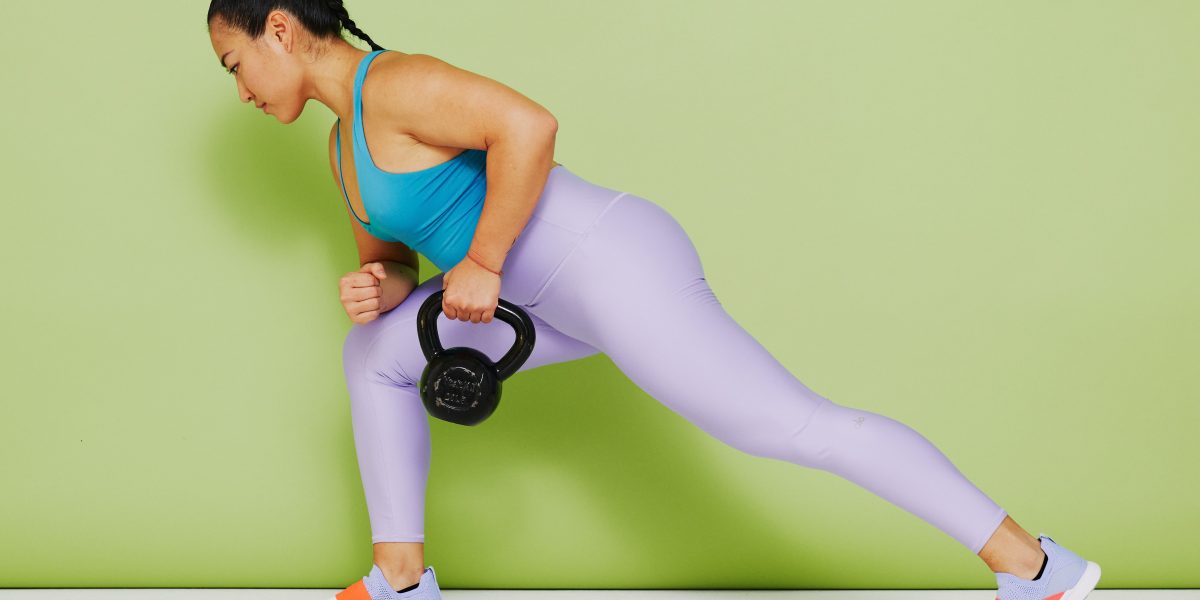In an ideal world, you’d have access to tons of different fitness equipment to really target all your muscle groups. But when your supply is limited? A single-kettlebell workout can still provide great full-body strength work.
In order to really challenge all your muscles when you have just one set weight at your disposal, you’ll likely need to tweak the reps for the moves accordingly, ACE-certified personal trainer Sivan Fagan, owner of Strong with Sivan, tells SELF. For instance, you’ll likely be able to perform more reps of exercises that work larger muscle groups, like your legs, versus those that target smaller muscle groups, like your shoulders. So for a single-kettlebell workout to be effective for your body, you really need to pay attention to how your body is feeling and adjust your rep count up or down as needed.
That’s exactly what’s on the schedule for the full-body workout Fagan created for SELF below that uses just one, medium-weight kettlebell.
In the workout, you’ll take on four exercises to work your whole body: quads and glutes (split squat), core (windmill), back (single-arm row), and shoulders (single-arm push-press). You’ll be given the same rep range for the split squat, single-arm row, and single-arm push-press, and a slightly lower rep range for the windmill, but note that the ranges are simply “a general recommendation,” says Fagan. For example, with the split squat, you may find that your muscles can still handle more even after you’ve passed the top of the rep range. But with the windmill, you may find that even the lower rep range is still very challenging, since that exercise demands a lot of stability from the shoulder, a small muscle group that typically isn’t able to handle a ton of load.
That’s why it’s really important with this workout to pay close attention to your form—and more specifically, the number of reps you can do before that form starts to falter. You’ve found the correct number of reps when your muscles feel tired, and may only be able to eke out a rep or two before your form starts to break down. That may be below the suggested rep range or above it, which is completely okay!
Overall point is: Get mindful with this workout and really tune into how your muscles are feeling. When you need to tack on a few reps, do it, and vice-versa with backing off. With that approach, you’ll really challenge a ton of different muscles across your body, from your legs and butt to your biceps, shoulders, and back.
In addition, you’ll seriously fire up your core in every movement here, since all four exercises are unilateral, meaning just one side of the body is working at a time. Compared to bilateral moves where both sides of the body work simultaneously, unilateral exercises require more core activation since your midsection muscles have to fire to prevent your body from twisting, leaning, or bending to the side as it naturally wants to do, explains Fagan.
